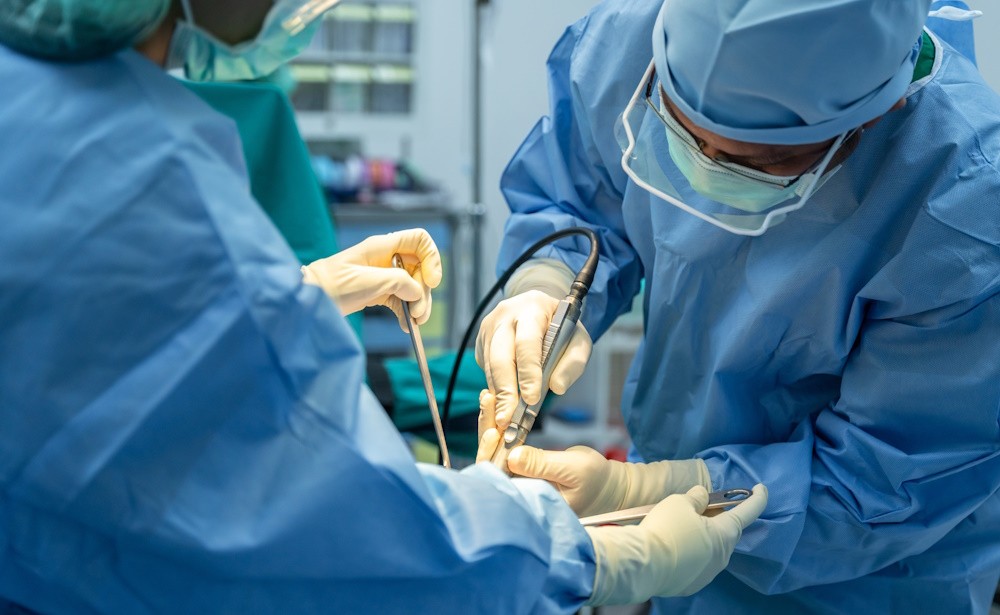What to Expect When Your Orthopedic Doctor in Wichita Recommends Surgical Treatment
In the ever-evolving world of healthcare, minimally invasive orthopedic procedures have emerged as a transformative approach to addressing a wide range of musculoskeletal conditions. These procedures are gaining prominence as the preferred method for treating orthopedic problems, offering several advantages over traditional open surgery.
In this blog, we will explore the world of minimally invasive orthopedic procedures, the conditions they address, and the benefits they bring to patients. Additionally, we will provide useful information about how to find an orthopedic surgeon near you who specializes in minimally invasive surgery.
What Are Minimally Invasive Orthopedic Procedures?
Minimally invasive orthopedic procedures involve making small incisions and using advanced medical technology to access and treat the affected area. Arthroscopic surgeons use small cameras which are inserted into the incisions, allowing them to see inside the joint on a monitor. They also use specialized arthroscopic surgical instruments that are small enough to fit through the incision points.
By comparison, traditional open surgery requires larger incisions and more invasive techniques. Although this provides greater access to the joint in question, the patient pays for it on the backend with extended recovery times and increased pain levels. Additionally, many patients who undergo invasive surgery require physical therapy to regain their mobility and help with pain management.
Conditions That Warrant Minimally Invasive Orthopedic Procedures
When consulting with an orthopedic doctor in Wichita, they will try to resolve your issue using non-surgical means first. However, some conditions can’t be remedied without it. With that in mind, the following are some of the main conditions that warrant minimally invasive orthopedic procedures.
Knee Conditions
Arthroscopic knee surgery is commonly used to treat conditions like meniscus tears, ligament injuries, and cartilage damage within the knee joint.
Shoulder Conditions
Minimally invasive techniques can address shoulder issues such as shoulder impingement, rotator cuff tears, and labral tears, allowing for quicker recovery and less postoperative pain.
Lower Back Conditions
Minimally invasive spinal surgery can treat herniated discs, spinal stenosis, and other low back conditions, resulting in smaller incisions, less tissue damage, and reduced recovery times.
Hip Conditions
Hip Arthroscopy can treat hip labral tears, femoroacetabular impingement (FAI), and other hip joint problems with minimal disruption to the surrounding tissue.
Foot and Ankle Conditions
Minimally invasive orthopedic procedures can correct conditions in the feet or ankle, such as cartilage injuries and instability issues, including those that were incurred during athletic activities.
Benefits of Minimally Invasive Orthopedic Procedures
When consulting with an orthopedic surgeon near you about minimally invasive versus open surgery, they will typically highlight the benefits of the former option, including:
Smaller Incisions
The fewer incisions that are made, the better it is for the patient. Minimally invasive procedures use smaller incisions, resulting in less scarring, faster recovery times, and reduced risk of infection.
Less Tissue Trauma
Because arthroscopic surgeons make fewer and smaller incisions, it results in far less tissue trauma. Minimally invasive orthopedic procedures cause less disruption to healthy tissues surrounding the affected area, which minimizes postoperative pain.
Faster Recovery
Open surgery can take weeks or even months to completely heal. Arthroscopic surgery patients, on the other hand, often experience quicker recovery times and can return to their daily activities sooner. In fact, some patients are back on their feet within days of the orthopedic procedure.
Lower Infection and Complication Risk
The smaller incisions and decreased tissue trauma reduce the risk of postoperative infections and complications. This is one of the primary reasons that orthopedic doctors in Wichita prefer arthroscopic surgeries over open surgeries.
Improved Tissue Appearance
Smaller scars are more aesthetically pleasing, especially in areas where scarring might be visible. With the right recovery regiment and skin care products, the scarring from minimally invasive orthopedic procedures can be rendered virtually invisible.
Improved Overall Healthcare Outcomes
Minimally invasive procedures are as effective as open surgery in addressing orthopedic issues, with the added benefit of reduced trauma and faster healing. This results in improved patient satisfaction and better outcomes overall.
Book Your Appointment Today with an Orthopedic Doctor in Wichita
Truth be told, most orthopedic conditions don’t require surgery to get to the root cause of the issue. In fact, many patients with musculoskeletal challenges can manage their pain and regain mobility using non-invasive methods, including physical therapy, behavioral modification, over-the-counter or prescription medication, injection therapy, and assistive devices. Surgery is typically reserved as a last resort.
If you are currently suffering from a chronic orthopedic issue, the best way to get started is to make an appointment with an orthopedic doctor in Wichita. During your initial appointment, they will fully examine the affected area, potentially order some tests, and provide a diagnosis. After they’ve identified the root cause of your pain and discomfort, your orthopedic doctor will put you on an individualized treatment plan that will help with your pain management and mobility.
The advantageous part of working with the physicians at Mid-America Orthopedics is that our arthroscopic surgeons work under the same roof, making patient handoffs seamless and easy. In the event your condition requires surgery, you can rest assured that you’ll be in good hands.
Schedule your appointment today by calling (316) 630-9300. We can also be reached by email using the contact form on our website.

